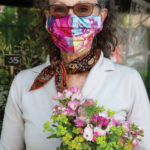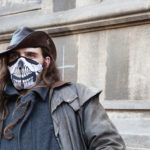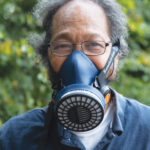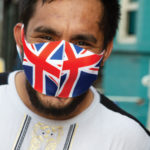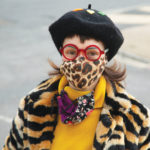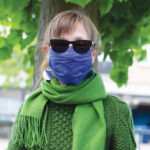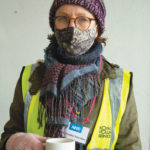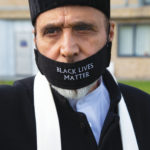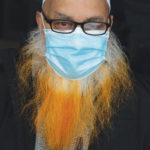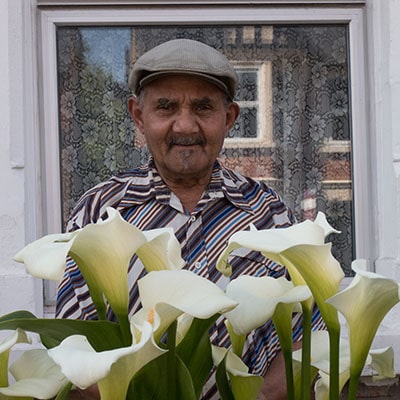Wear a mask! Oxford Pandemic portraits
This is a series of photographs which came out of a wider project to document the impacts of and responses to Covid-19 in 2020/21 in Oxford. Below is a small selection of a series published by Signal Books in September 2021. The book is available in good bookshops but you can also buy it direct from me for £10 incl P&P (UK) by contacting me via this website.
Reviews
I like this book. It is literally very simple portraits….my word there are some incredible facemasks… in a wierd way its very beautiful.
Fujicast ‘Book of the week’ 13 September 2021.
Every conceivable background and age group is taken in so that diversity is a conspicuous quality of the book…. the collection becomes a snapshot of social history at a peculiar moment in national history.
Oxford Alumni ‘Book of the week’ 1 November 2021
Its beautiful!
Shaista Aziz. Journalist and Oxford city councillor
What a great collection, and what is striking is that the masks do not conceal the individuality of the wearers.
John Gittings. former China Editor, The Guardian
The constraints of lockdown regulations provided an opportunity; the pictures document my experience of lockdown both in terms of locality and uniqueness. I conceived it as a social history. Mask wearing is not something that was widely done in the UK before the outbreak of the Covid pandemic in March 2020. It is, hopefully, an historical moment we will look back on remember and marvel at the strangeness of it all. Wearing a mask is an individual expression of collective solidarity. It is an expression of humanity at its best.
The images mainly consist of portraits of people wearing masks going about their daily life outdoors, and reflects their experience of and response to the constraints of lockdown. This is important because they record absence as well as presence. Quite a few people were shielding on government advice or because they felt that it was unsafe to be out in public. They are not recorded. Many of them were older, more vulnerable, or poorer members of the community. Nonetheless the images reflect and celebrate the diversity of the people of Oxford.  The response of NHS staff and volunteers delivering vaccines is also recorded, as is the specific Oxford dimension, the Oxford AstraZeneca vaccine itself, developed and manufactured in the city.
The response of NHS staff and volunteers delivering vaccines is also recorded, as is the specific Oxford dimension, the Oxford AstraZeneca vaccine itself, developed and manufactured in the city.
I try to document people’s responses to the circumstances they found themselves in and in all weathers; queueing at shops or markets for essential food shopping while non-essential shops were closed; waiting at hubs such as bus stops or the rail station when travel restrictions were eased but mask wearing was compulsory; queueing for their vaccination from the start of 2021; or engaged in some of the significant political movements that marked the year, including Black Lives Matter.
These responses could be fearful, especially at first, with highly elaborate and technical masks or “double masking”; utilitarian – the ubiquitous throw away light blue or black surgical-style masks; fashion conscious; expressions of identity or “tribal” affiliation; playful, beautiful, or combined with hats, scarves and dark glasses, to create acts of disguise. They also reflect multiple identities, like the young man from East Timor in his Union Jack mask. The images also reflect the artistic response these colours, designs, clothing combinations, identities and contexts, evoked in me as a photographer.
For a photographer interested in documenting people, masks also disrupt the most common relationship between photographer and subject, the “smile please” or ‘‘say cheese” dynamic. Behind a mask the subject can be smiling or grave, but the visual signals are, largely, absent.
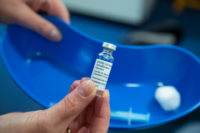 These photographs are therefore a record of this collective and individual response to an event and set of specific personal circumstances that I and the subjects experienced over a dramatic, unprecedented and, for many, tragic year.
These photographs are therefore a record of this collective and individual response to an event and set of specific personal circumstances that I and the subjects experienced over a dramatic, unprecedented and, for many, tragic year.
